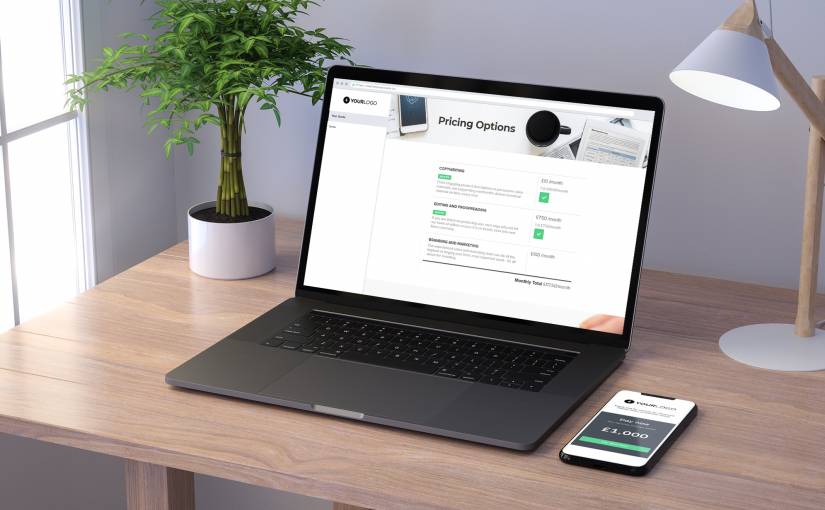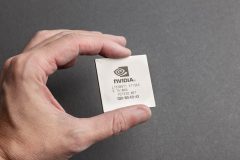Love them or loathe them, business proposals are one of the integral parts of winning new clients.
No matter how advanced our sales tools get, it is still necessary to pitch your idea in the shape of a proposal before the client gives you the green light.
Unfortunately, they are also one of the most tedious aspects to winning new clients, as they require significant time and dedication to get right.
So, what does the future have in store for proposals?
Will they die out and make room for a new, more advanced way to close deals in the B2B sector? Having seen quite a few proposals in a wide range of industries, here’s my take on what the future holds for business proposals and how they will change.
Automation is king.
The reason why so many sales professionals have a dislike for proposals (to put it mildly) is that they are so time-consuming. In order to win a deal, you’d have to take hours upon hours to write a proposal from scratch, wasting precious time and resources. Who’s got time to write when there’s leads to close?
The proposals of the future will be fully automated and done using proposal software such as Better Proposals. Instead of manually writing out your proposals, you will be able to edit a few key elements, with the software taking care of other elements, such as the cover, design, payment system etc. Not only will this make writing a whole lot easier and shorter, it will also add a ton of useful features (which we’ll discuss in a minute).
The copy will matter more than ever.
As we’ve seen time and time again, the words you use in your proposals make a significant difference in whether they get signed or not. From our own research, simply calling your pricing section “investment” instead of “pricing” has an amazing effect on conversions. Imagine what else you can by just making a few good choices with your wording.
The proposal of the future will be like an extension of a great landing page or video sales letter. The copy will be carefully written to increase conversions, having in mind the reader who has the power to make a decision and sign. Those companies that aim to understand their clients and speak their language in the proposal copy will have far better chances of having their proposals signed.
The good news is – you won’t have to take a $5,000 copywriting course to get the copy right. Instead, focus on the meeting with the client before you send out a proposal. Find out the client’s pain points and aim to speak their language – literally.
Write the words that the client is using and you will see immediate increases in the number of signed proposals. In other words, bland, generic proposals belong in the past. Hyper-personalized, automated proposals will be the new standard.
Print is dead.
If you send out a proposal to someone and they print it out to discuss it, that’s surely a good thing, right? In fact, it’s the exact opposite. As we’ve found analyzing over 180,000 signed proposals, if your proposal is printed, it is 78% less likely to get signed.
To get around this, future business proposals should be less printer-friendly. In other words, stay away from PDFs or any other document formats that make it easy to print out a proposal. Why is print so detrimental conversions? One theory is that once printed out, a proposal is on the table with several stakeholders, which decreases its chances of being signed.
Proposals are moving to the cloud.
If you can’t create proposals in PDFs or similar formats to be printed out, what can you really do? Use a cloud platform, of course. This will make it easier for clients to navigate proposals, along with a couple more extras.
By putting your proposal in the cloud, you will be able to track how much of the proposal was read, how long the client spent reading it etc. You can also get notified immediately when they sign and pay and much more. Say goodbye to email and embrace the cloud – it brings immense advantages.
Unresponsive proposals will die out.
It’s no secret that mobile is taking over as the primary platform in B2C (for internet use and shopping, for example), but it’s also slowly making an entrance in the world of B2B.
As our research has shown, the third of all proposals are opened on mobile devices, with the percentage slowly growing every year. If your proposals don’t look good on every device (or can’t be opened on mobile), don’t expect too many conversions.
While clients can open the proposal on some other device, all good websites and apps are optimized for mobile nowadays. We don’t have any data on how much unresponsive proposals hurt your conversions, but one thing is for certain. If clients can’t properly view your proposals, they will spend less time reading them.
The fastest proposals will win.
If your client is shopping around, they’re probably considering someone else’s offer besides yours. If you can’t beat the competition with a better offer (or a better proposal), you can get the upper hand with speed.
As we’ve seen several years in a row now, proposals that get sent out more quickly have higher conversion rates. You may think of it as an act of desperation, but the sooner you send out a proposal after a meeting with a client, the higher the chances of it being signed.
What’s more, proposals that are sent out quickly also get paid sooner. If you send the proposal within the first 24 hours of meeting the client, it should get signed within 6 days.
Live chat for the win.
You’ve probably witnessed the explosion of chatbots and live chat solutions on websites in the past two or so years. Whether B2B or B2C, every website nowadays seems to have a chat option set up. The reason is simple – visitors and clients are used to it. So why not leverage this for proposals as well?
The proposal of the future will have a chat feature integrated directly into it. As the client is reading, someone from the company will be there in real time to answer their questions. There’s tech to make this happen already, the only issue is your team’s availability.
Standalone proposal software belongs in the past.
If you want to create a proposal quickly, you will use some sort of proposal software. However, on its own, apps that create proposals are very limited in their use. The proposal of the future will be created through an app that links to your CRM, project management app, team communication app and more.
By directly importing your clients’ most important data from your CRM, you will be able to save hours on writing. Simply import data instead of manually typing everything out. Additionally, you will be able to keep everyone updated as the proposal will become a key part of your CRM and the sales team can see the deal progressing through the CRM.
Conclusion
The business proposal of the future will be vastly different from what we’re used to seeing today. Instead of a tedious process that takes hours, in the future we will create and send proposals through software integrated with a CRM, optimized for mobile and equipped with live chat.
In short, proposals will become an integral part of the sales process, instead of being an afterthought that makes sales professionals











